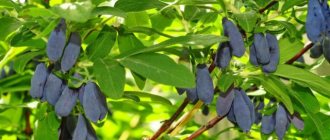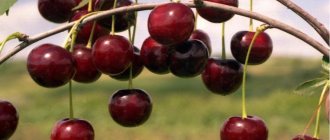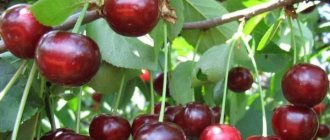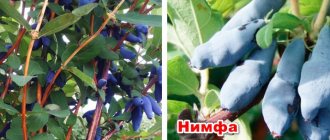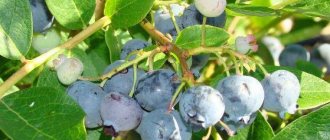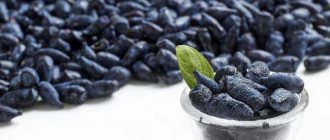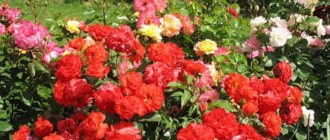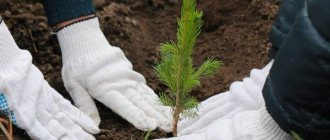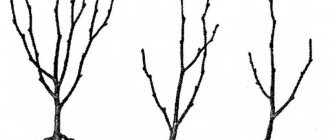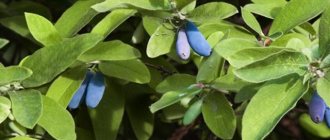Description of culture
When describing the Tsarskaya cherry plum variety, everyone notes that the tree is short-growing and has a height of 2.5 m. The crown is sparse, compact, round and slightly flat. The foliage is light green, elongated with pointed ends. The “royal” plum has round fruits with an average weight of 18 to 25 g. The taste is sweet and sour, the core is juicy and bright yellow. The fruits of the Tsarskaya cherry plum (plum) have a slight waxy coating and their skin is dense. The value lies in the rich taste characteristics of the fruit and the possibility of long-term storage of fruit (up to 1 month). The tree is distinguished by its abundance of fruits and early ripening. Already in the second year you can get the first harvest. Cherry plum "Tsarskaya" is resistant to frost and disease. During flowering, beautiful white flowers with smooth petals bloom. Plum prefers well-lit areas and fertile soil, with low groundwater levels. It is recommended to plant pollinator trees for the Tsarskaya cherry plum nearby at a distance of up to 15 m. With this approach, the plum will bring a large harvest every summer.
Characteristics
Among the important characteristics of the Tsarskaya cherry plum variety are the high content of citric acid and sugar in the fruit. Cherry plum contains a lot of vitamins and minerals. This variety of plum is able to remove cholesterol, is a good diuretic, which helps remove salts and harmful water from the body, supports the functioning of the heart and prevents heart, liver, and kidney pathologies. Plum can improve appetite, rid the body of excess bile, it eliminates constipation and intestinal atony. Yellow cherry plum “Tsarskaya” is well absorbed by the body and can even lower the temperature. A ripe plum is quite sweet; the sourness indicates the unripeness of the fruit.
Drought resistance, winter hardiness
The “Tsarskaya” cherry plum tree itself and its crown have good resistance to frost; they can withstand temperatures up to – 350C. At the same time, the root system will not tolerate severe frosts or a significant drop in temperature; they can freeze already at - 100C. If there is snow, you should rake it up to the cherry plum trunk, and if there is none, be sure to protect the root system of the tree from freezing. Mulching the soil up to 7 cm with horse manure will protect the roots; you can use leaf litter or spruce branches. It is better to wrap the tree trunk with nylon. Growing Tsarskaya cherry plum will not bring much trouble.
Attention! It is prohibited to use polyethylene and roofing felt for insulating wood.
Pollination, flowering period and ripening time
Plum “Tsarskaya” requires help in pollination, and therefore it is necessary to plant pollinator trees from 3 to 15 m from it; the following varieties are perfect for this:
- cherry plum "Kuban comet";
- cherry plum “Found”;
- cherry plum "Cleopatra";
- cherry plum “Traveler”;
- cherry plum "Pramen".
The plum begins to bloom at the end of April, and already in early August we collect ripe fruits.
Productivity, fruiting
The productivity of "Tsar's" cherry plum is good and reaches 25 kg per tree. The fruits are medium, about 20 g, ripening in late July - early August. The tree begins to bear fruit from the second year after planting.
Area of application of fruits
The “Tsar’s” plum can be consumed fresh or dried; compotes and juices are prepared from the fruits of this variety. By processing plums, they make jams, wine, and use them in baking.
Resistance to diseases and pests
This plum variety is resistant to many common diseases and pests, but for a consistently high yield, a number of measures should be taken and preventive measures taken. For different varieties of plums, the following diseases can pose a danger:
- moniliosis can damage the trunk, leaves and branches;
- rust affects the leaves;
- powdery mildew affects leaves, shoots and trunks;
- swamp will damage the wood of branches and trunks;
- the downy silkworm will attack the foliage of the tree;
- the codling moth will attack the fruits, which will significantly reduce the yield.
It is necessary to constantly monitor the absence of diseases in the tree; with the first signs of disease, it is necessary to immediately begin the fight, treat it with special means and preparations. In the photo of the Tsarskaya cherry plum we can see leaves damaged by rust.
Advantages and disadvantages
Among the advantages of the yellow cherry plum “Tsarskaya” they note:
- precocity;
- consistently good harvest;
- resistance to diseases and pests;
- shelf life and ability to easily transport;
- the beauty of the fruit.
Despite so many positive qualities, this variety also has some disadvantages:
- self-sterility;
- tendency to become overgrown;
- low resistance of roots to frost.
Despite this, reviews of the Tsarskaya cherry plum variety are the most positive.
Agricultural technology
Cherry plum is not picky in choosing soil. It thrives on sand, clay, in arid regions and on land with close groundwater. Caring for it is very simple; seedlings easily adapt to a new planting location and quickly increase their yield.
Correct fit
It is recommended to plant seedlings of any variety in early spring, after the soil has completely thawed and warmed up. Depending on the region, the planting date falls in mid-April - early May. The hole for planting a seedling is adjusted to the size of the root system. The depth of the planting site should be 25-30 cm (60-65 cm) greater than the root system, and 70-75 cm in width.
A young seedling needs to be allocated a plot of 4*5 meters, since over time it will grow and the crown will take up quite a lot of space. The optimal soil is fertile loamy soil.
Correct fit
When choosing a seedling, you need to pay attention to:
- integrity of the root system, shoots;
- presence/absence of damage, parasites, fungi.
Autumn planting does not guarantee the plant's survival in winter.
The site is chosen to be sunny, protected from open wind. Before introducing a young plant into the soil, the soil must be fed with organic and mineral fertilizers (manure, humus, superphosphate).
Important! All roots of the tree must be alive, without dry shoots, and strong. The placement of a young tree should be carried out with the most careful actions so as not to damage the root collar, which, when planted, should exceed the ground level by 7-9 cm
Immediately after planting is completed, the plant is watered, mulched and tied to a peg.
The placement of a young tree should be carried out with the most careful steps so as not to damage the root collar, which when planting should exceed the ground level by 7-9 cm. Immediately after planting is completed, the plant is watered, mulched and tied to a peg.
Care
Most cherry plum varieties are self-sterile, so to get a good harvest in the garden you need to find a pollinator. To do this, it is better to grow various varieties of cherry plum on the site at the same time. The Kuban coin can boast of self-fertility.
The cherry plum begins to bear fruit much faster on poor soils, while in more fertile soils it intensively grows wood.
Note! All varieties of cherry plum are big fans of moisture, however, there should not be stagnation, otherwise the root system will begin to rot. One watering, depending on the parameters of the tree, – 3-6 buckets
For the first three to four years, it is very important to regularly loosen the soil and remove weeds. In the future, weeds will no longer be dangerous
Watering is carried out as it dries, depending on climatic conditions.
To prevent rodents from damaging the tree bark in winter, you need to take care of it in the fall - you can wrap the cherry plum trunk with a plastic mesh (15-20 cm from the ground).
Every year it is necessary to trim, cut and shorten the branches. If this is not done, the branches become very thick and the fruits become smaller.
Top dressing
Every year it is recommended to feed the plant with urea, phosphorus-potassium complexes, nitrogen-containing and organic fertilizers.
- In the spring, when the first flowers appear on the plant, it is necessary to add potassium sulfate and urea;
- In June - nitrogen fertilizers and urea;
- After harvesting - superphosphate and potassium sulfate.
Attention! The usefulness of cherry plum is determined by its color: black fruits have a high content of pectins and anthocyanins, and yellow fruits have a high content of sugars and citric acid.
Disease Prevention
Most varieties have strong immunity to diseases, but, nevertheless, preventive measures will not hurt.
Moniliosis is a common disease of cherry plum, which is difficult to cope with and requires careful disposal of infected areas (it is better to burn).
The most dangerous pests are the codling moth and the downy silkworm.
To protect seedlings from diseases and pests in the fall, the tree is sprayed with a solution of copper sulfate.
There are a lot of cherry plum varieties, and each of them is remarkable in its own way. The variety of species makes it possible to choose for your site exactly the one that is optimally suited to the climatic conditions and soil. Every gardener is capable of growing an excellent harvest of tasty fruits if he properly cares for the plant.
vote
Article Rating
Landing Features
Among the peculiarities of planting and caring for the Tsarskaya cherry plum is that it is demanding on the soil; if the soil is highly acidified, it is necessary to add ash or manure to it. You should also follow some rules when planting a seedling.
Recommended timing
The best period for planting Tsar plum seedlings is March-April. This must be done before the buds swell. The land for planting must be prepared several weeks in advance and first cleared of weeds.
Choosing a suitable location
The best soil for plums will be loamy, drained soil, preferably the absence of groundwater, the distance to the place of their flow should be more than 1.5 meters. Plum loves good lighting and protection from cold winds. The ideal place for planting is considered to be the southern or southwestern area near the walls of the house.
What crops can and cannot be planted next to cherry plum
Any type of plum can be planted next to the cherry plum, at a distance of 3 meters. Moreover, the Tsar plum variety is self-sterile. Cherry plum will not be happy in proximity to pear, walnut, cherry and apple trees, an exception may be an old apple tree. She treats other trees quite calmly.
Selection and preparation of planting material
When choosing a cherry plum seedling, you need to carefully examine the condition of the roots; they must be strong, elastic, developed, intact and fresh. The root system should contain up to 6 shoots, each about 25 cm long.
Attention! It is necessary to carefully examine the seedlings for damage and disease.
The ideal option is a two-year-old seedling obtained by cuttings or shoots. Such a tree will have the ability to recover better after freezing.
Landing algorithm
For good growth of cherry plum seedlings, the following rules should be taken into account:
- the distance between trees is more than 3 m;
- a hole with a diameter of 60 cm and a depth of up to 80 cm;
- mandatory addition of a mixture of horse manure (or humus) with potassium sulfate and superphosphate;
- the presence of drainage from broken bricks or crushed stone;
- the roots, immediately before planting, must be dipped in a mixture of clay and water, which should be the consistency of sour cream;
- in the hole, the roots are carefully straightened and sprinkled with good fertile soil;
- the root collar should be located 7 cm above the soil level;
- after planting, pour into the hole at a distance of 50 cm around the tree trunk, use at least 3 buckets of water;
- Be sure to mulch the seedling with peat or compost with the addition of dolomite flour or garden lime, the layer should be up to 8 cm.
Tree vegetation methods
The Royal cherry plum is propagated by budding, copulating with plums, and rooting lignified shoots.
Features of cuttings
To obtain native root material, the cutting method is used. The work is carried out as follows:
- At the end of June, cuttings 8-12 cm long are cut from the growth of the current season.
- Use pruning shears to remove material 1 cm below the bud.
- The bottom leaf is cut off, and to reduce evaporation, a cutting with 2-3 leaves is left.
- To enhance root formation, the branches are soaked in growth stimulants and rooted in drained substrates, immersed to a depth of 1.5-2 cm.
A full-fledged root system is formed in 30-45 days.
Lignified cuttings method
About 70-80% of the material takes root if cuttings are taken during leaf fall. It is better to use annual shoots 6-8 mm thick, from which residual leaves and side branches must first be removed. Cuttings 20-25 cm long are harvested in early autumn. After cutting, the material is treated with molten paraffin and left for storage. Lignified branches are planted in the spring.
Budding technology
The grafting method is the most popular among summer residents. The choice must be made based on the bark - it should separate well near the rootstock during the period of sap flow in the summer. The activities are carried out as follows:
- Leaves are removed from the branches.
- Make a cut in the shape of the letter T - first draw a line horizontally with a garden knife, and then from top to bottom.
- Parts of the cut bark are separated.
- Cut the shield with the bud from the central part of the cutting to a length of 3-4 cm.
- Pull apart the bark and insert a piece of cutting.
The budding area is tied with cloth.
Breeding in the butt
Used for good contact between scion and rootstock. For rapid fusion, the procedure is carried out at a temperature of +10 degrees. On the rootstock, you need to make a cut of 6-7 cm at an angle of 45 degrees. The second cut is made 3 cm higher and intersects with the first. The cut part must be removed and replaced with a shield, inserting it onto the rootstock. The grafting mark is wrapped with tape. The choice of propagation method is at the discretion of the summer resident, depending on the climate and the amount of material that needs to be obtained. Despite all the complexity of planting, caring for and growing, the specific Royal cherry plum is loved for its small, sour fruits. The tree would be an excellent landscaping idea as it blooms beautifully in the spring.
Article Rating
Subsequent care of the crop
For a beautiful crown formation, it is necessary to cut off all tree branches by 1/3 when planting. The most favorable time for pruning Tsarskaya cherry plum is the beginning of April. In the first years of tree growth, you need to cut off all the branches, leaving only the strongest skeletal ones at the base. You definitely need to cut off the growth. After 4 years, the central conductor should be removed, then the crown will have the most correct shape. Cut off shoots over 50 cm in spring. Branches that bend strongly under the weight of fruit should also be pruned.
When preparing for wintering the Tsarskaya cherry plum, pay special attention to the roots of the tree. The tree trunk must be wrapped in breathable material, and the roots must be covered with a 7 cm layer of horse manure.
Plum loves moisture and needs regular watering. During the growing season, watering should be carried out at least once every 10 days. One tree should require at least 5 buckets of water. After watering, you should loosen the soil near the tree and weed it.
In the fall, you need to feed the tree: 6 kg of humus is mixed with 60 g of urea per 1 square meter. m. Cherry plum should be fed three times during the growing season:
- March – 40 g of potassium sulfate and urea;
- early June - 40 g of urea and nitrofski;
- end of August - 40 g of superphosphate and potassium sulfate.
In winter, nylon, which should be wrapped around the trunk, will help protect against rodents.
Reproduction of hybrid cherry plum
Hybrid cherry plum is propagated vegetatively:
Vaccination. Grafting methods are similar to those applied to other fruit trees: spring cuttings; summer eye. Budding works better
It is very important to choose the right rootstock. Common seed rootstocks – wild cherry plum seedlings
Vigorous trees grow on them. The soil often develops growth that should be removed. There are many new clonal rootstocks for stone fruits. A whole series of vegetatively propagated rootstocks for apricot, plum, cherry plum, and peach have been developed. Each of them has its own characteristic. Some of them reduce tree growth by up to 50%. There are also more vigorous ones. By cuttings. There are many varieties of hybrid cherry plum that are bred from cuttings: lignified, green, semi-lignified. Trees propagated by this method are slightly lower than those grafted onto cherry plum seedlings. When frozen, shoots of the cultivated variety begin to grow. From these plants it is possible to form fruit walls.
Diseases and pests, methods of control and prevention
To protect against aphids, you need to spray the tree with a 1% solution of DNSA or laundry soap diluted in an amount of 200 g per 10 liters of water. Brown fruit mite is afraid of 10% Karbofos (75 g per 10 l of water) or 10% benzophosphate (60 g per 10 l of water). Spraying with 0.2% Metafos or 0.3% Karbofos will protect you from the plum moth; installing trapping belts made of cardboard or burlap up to 25 cm wide will help; they must be tied to the trunk.
To protect against powdery mildew, diseased areas should be removed and treated with a solution of copper sulfate. As a preventive measure, treatment in April with a solution of colloidal sulfur (20 g) with the addition of copper sulfate (5 g) to a bucket of water will help. Spraying with 1% Bordeaux mixture in a proportion of 100 g per bucket of water helps get rid of rust. Moniliosis can only be removed by completely cutting off the infected area of the tree, including 10 cm of the healthy part. Copper sulfate is used as a preventative measure. It must be diluted in a proportion of 100 g per bucket of water and sprayed on the tree.
